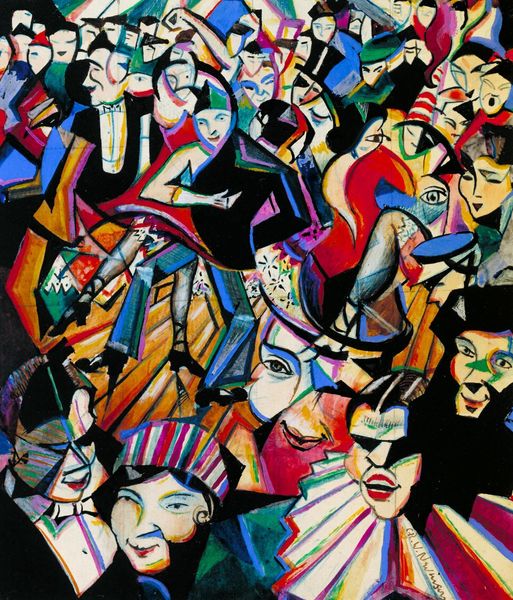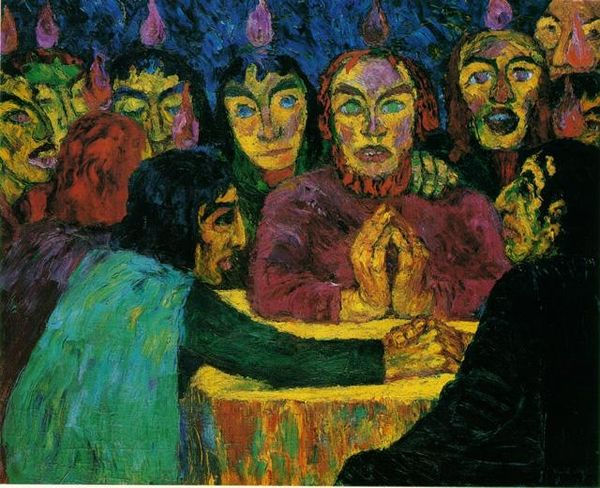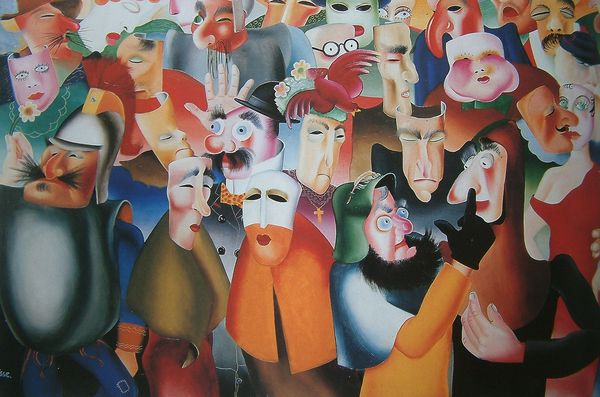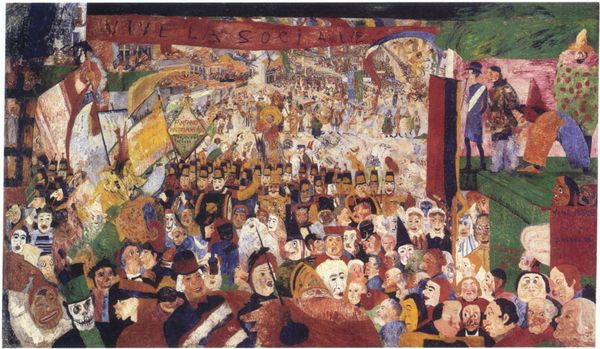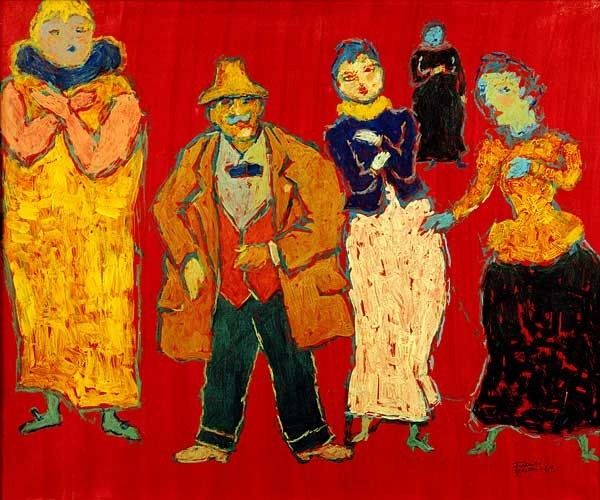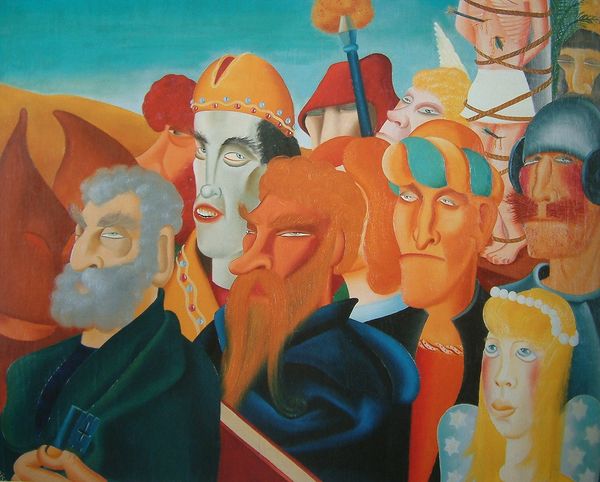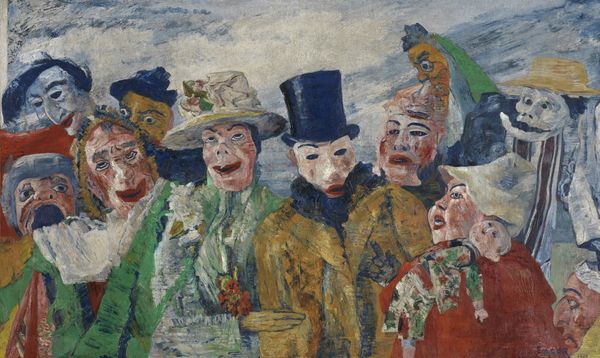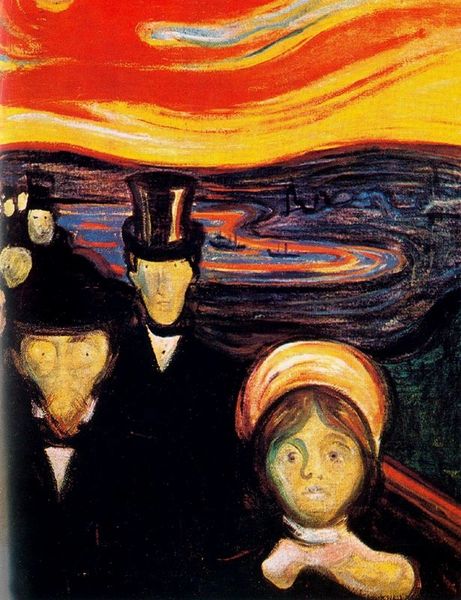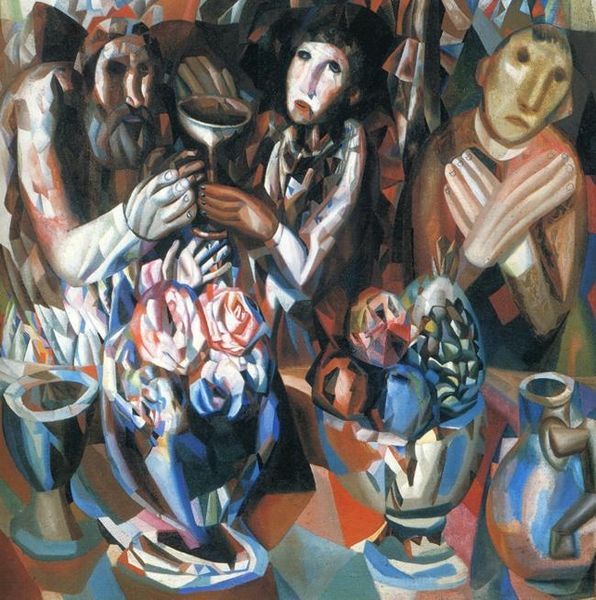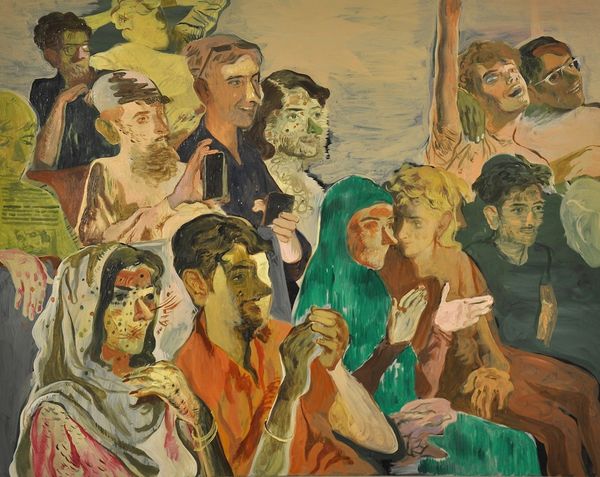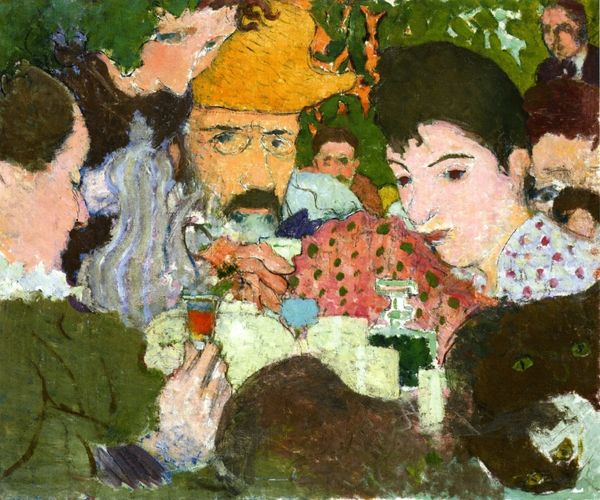
Dimensions: 120 x 80 cm
Copyright: Public domain
Editor: Here we have James Ensor's "Self-Portrait with Masks," created in 1899 using oil paint. The sheer number of masked figures surrounding Ensor is overwhelming. What social commentary do you see within this painting, especially given the era in which it was created? Curator: This painting really plunges us into a fascinating interrogation of identity, doesn't it? Consider the context: 19th-century Belgium, a society grappling with industrialization, class divisions, and burgeoning avant-garde movements. What do you think the masks symbolize within this turbulent landscape? Is Ensor critiquing the bourgeoisie, hiding behind facades of respectability? Editor: It could be that, or maybe about the masks we all wear daily. It seems as though Ensor is making a statement about how we conceal our true selves behind social expectations and stereotypes. Curator: Exactly! Ensor's self-portrait becomes an assertion of the individual amid a sea of conformity. We might interpret this through a feminist lens: the masks could represent societal constraints placed on individuals, particularly women, to conform to specific roles and appearances. Do you think Ensor, by placing himself amongst them, is critiquing his own complicity in such social structures? Editor: I think that’s interesting. Maybe this also talks about race; it makes me think about how others perceive me or misinterpret what they think is genuine. Curator: That's a potent point. By juxtaposing himself with these often grotesque or stereotypical masks, is Ensor challenging the viewers' assumptions? Is he holding a mirror up to society's prejudices? Editor: Thinking about it like that has given me a lot to consider. Thanks for sharing these viewpoints with me. Curator: It has made me view my approach to this artwork differently. Thank you for sharing your thoughts and observations; it has certainly opened my eyes.
Comments
No comments
Be the first to comment and join the conversation on the ultimate creative platform.
